I didn’t get the chance to sit through all 73 minutes of Donald Trump’s interview by CBS (the channel aired a 60-minute version of it, chopping off parts such as where Trump talks about Pakistan’s testing of nuclear weapons) but what I did instead was read the full transcript of the exchange.
What struck me was the US president’s rambling incoherence. Journalist Norah O’Donnell was having a hard time steering the conversation towards any meaningful direction, as Trump lapsed into a stream of consciousness monologues, frequently veered off-topic and kept alternating between airing of grievances, fanciful boasts and blame-Biden syndrome.
This, at an interview where he came prepared. His idea behind it was to sell the meeting with Xi Jinping as a ‘deal-making masterstroke’.
Now, I am not a psychoanalyst, but it is quite clear that the US president is suffering from age-related cognitive decline. Rhetorical bombast may be enough to spin any development as a ‘massive win’ to his doting MAGA cult, but it is evident that Trump’s impulsivity, inconsistency, unpredictability, incoherence and unreliability are systematically eroding American influence and handing China a crucial advantage.
Ironically, Trump instinctively grasps this changing power equation — even if he is incapable of deducing the causality — and his syrupy courting of the Chinese president during the Busan summit and casting it within the ‘G2’ framework springs directly from this intuitive assessment.
I’ll quote an exchange from the CBS interview to clarify my point. To a question on the US president’s meeting with the Chinese president, Trump replies:
“Well, first of all, we get along great, and we always really have. We had the COVID moment, which was not — attractive as far as I was concerned. I wasn’t so happy. But outside of that, we have always had a great relationship. He’s a powerful man. He’s a strong man, a very powerful leader.”
“And — we’ve always — had the best of relationships, probably the best of — I could — I think I could speak for him, just about as good as it gets from his standpoint and from my standpoint. And having that is important because of the power of the two countries.”
Trump’s public acknowledgement of the structural parity – a concession that Beijing sought for decades – has repercussions for middle powers such as India, because even a limited rapprochement between the United States and China directly impacts India’s regional security matrix. To add to this complexity, Trump has a unique way of dealing with strong adversaries who cannot be bullied or intimidated with bluster.
By now, it has been established that he often demands greater tributes and compliance from America’s allies and partners while courting adversaries or cutting unilateral deals with them on the side. Indians might wonder why they are still at the receiving end of an extra 25 per cent tariff for buying Russian oil while China, the largest buyer of Russian fuel, remains the subject of Trump’s intense flattery. The answer is simple. India is not powerful enough in Trump’s eyes.
This demonstration of asymmetric treatment that favours the bigger power is symptomatic of Trump’s foreign policy. Take Nexperia, the Dutch semiconductor company owned by China’s Wingtech that has become a symbol of a great power game and the new bipolar world ruled by the law of the fish.
The Dutch government seized control of the Chinese-owned chipmaker in September 2025, citing national security concerns and “serious governance shortcomings” under an obscure Cold War-era law from 1952 that splintered the company and hiked up geopolitical tension between the Netherlands and China.
Court documents indicate this action followed significant pressure and warnings from US officials that the Netherlands subsidiary will be added to a trade backlist unless the Chinese management and its CEO Zhang Xuezheng was removed. The Dutch authorities were acting under US pressure.
In retaliation, reports SCMP, “Beijing put restrictions on what Nexperia products could be shipped out of the country, where 70 per cent of the company’s chips — vital to car manufacturing — are processed and tested, sending panic through European industry.”
The Chinese commerce ministry on Tuesday blamed the Netherlands for the “turmoil and chaos in the global semiconductor supply chain,” and said it “should bear full responsibility” for the crisis.
Dutch hands were forced by an American law, the ‘updated 50 per cent subsidiary rule’ in late September that mandated expanding export restrictions to companies 50 per cent owned by blacklisted entities like Wingtech. Following the Trump-Xi meeting, however, Washington agreed to suspend the implementation of the new rule for one year. The pause, ostensibly to ensure a solution to an immediate restoration of the auto chip supply chain that also affects America’s automobile industry, effectively threw the Netherlands, America’s NATO allies, under the bus.
Beijing announced plans to resume chip exports from Nexperia China, provided the Netherlands surrendered executive control and reversed its seizure, or reach an agreement with China.
As the Dutch grapple with the legal and geopolitical consequences of its actions, the sequence of events demonstrates how Trump prioritised American interests and great power convenience over the interests of its treaty ally that may put thousands of European jobs on the line.
Nexperia China will resume global supply of 6 BILLION COMPONENTS PER MONTH with 100% China sourced wafers.
— Kathleen Tyson (@Kathleen_Tyson_) November 2, 2025
Contract with Nexperia China or close down industrial production.
Payment in RMB only.
Bye, Europe. You lose. Again. https://t.co/XspznNTC85 pic.twitter.com/Ldguzj95Dr
Trump’s foreign policy frequently appears shaped by business interests and hyper transactionalism rather than strategic coherence. Take the case of US tech giant Nvidia, and its advanced Blackwell AI chips. Nvidia CEO Jensen Huang, who’s struggling to regain a foothold in the Chinese market, relentlessly lobbies Trump with whom he has a direct line of contact.
Just before the US-China summit in Busan, Trump told his advisers that acting on the Nvidia CEO’s request, he wants to discuss with Xi the sales of US tech firm’s new generation AI chips to China. Notably, after the Trump administration granted export licenses for certain Nvidia and AMD chips to China in exchange for 15 per cent of the revenues ignoring national security concerns, China still went ahead and blocked the sales. Nvidia’s market share went down from 95 per cent to 0 per cent.
According to the Wall Street Journal that broke the story, “greenlighting the export of Nvidia’s Blackwell chips would be a seismic policy shift potentially giving China, the US’s biggest geopolitical competitor, a technological accelerant… As they prepared to meet Xi, top officials including US Secretary of State Marco Rubio told Trump the sales would threaten national security, saying they would boost China’s AI data-centre capabilities and backfire on the US.”
Trump ultimately refrained from picking up the topic during the October 30 meeting, but it goes to show how the US president is not averse to using even national security as a bargaining chip for ‘deals’ and is totally oblivious to the dangers of his mercantilism yielding significant strategic advantages for China.
Ever since Trump came out swinging with the G2 framework, a discarded concept from the Obama years, the current consensual position among Indian strategic community is Trump’s invocation of the concept was a superficial ploy to appeal to Xi’s vanity ahead of a crucial meeting, and that the US-China deal engineered by the two leaders is little more than a tactical pause because the great power rivalry is too entrenched, and possibilities of cooperation are remote.
In this piece, I want to push back against this notion a little.
My first contention is that in invoking ‘G2’, a term that carries historic baggage, Trump wasn’t playing the tough real estate tycoon from Manhattan who flatters to deceive his adversary in a tricky negotiation.
On the contrary, having underestimated the leverage China has over the US and bungling up the summit lead up with a chaotic mix of threats and climbdowns, Trump was trying to pander to Xi’s ego from a sense of vulnerability. His reference to the G2 framework came from a position of weakness and an acknowledgement that the US has lost the trade war and must sue for peace.
I’ll quote one exchange from the CBS interview before explaining my contention further.
“CBS: Our own intelligence agencies say the Chinese have infiltrated parts of the American power grid and our water systems. They steal American intellectual property and Americans’ personal information. They bought American farmland. How big of a threat is China?
TRUMP: It’s like everybody else. We’re a threat to them too. Many of the things that you say, we do to them. Look, this is a very competitive world, especially when it comes to China and the US And — we’re always watching them, and they’re always watching us. In the meantime, I think we get along very well, and I think it’s — I think we can be bigger, better, and stronger by working with them as opposed to just– knocking them out…”
From recognising China as a “pacing challenge” that poses the “most comprehensive and serious challenge to US national security", the Trump administration is pivoting towards cooperation with China, reading down the strategic threat, and signalling that it is ready to draw a ‘new type of major country relationship’ that Xi Jinping, then a vice-president, proposed during a visit to Washington in February 2012.
Regardless of the spin that Trump gives to the outcome of the Busan summit, fact remains that China secured substantial material gains in the negotiations that demonstrated its newfound leverage. Trump started the trade war, escalated without a backup plan, and in absence of allies whom he had alienated with tariffs and extractive deals, found himself outfoxed by China’s supply chain warfare via rare earths, a critical commodity over which Beijing enjoys unilateral control.
Conversely, American soybeans can easily be replaced by Brazilian or Argentinian harvest, as Trump found out rather painfully when American farmers faced steep losses and farm bankruptcies. Trump also overestimated the power of the American consumer. Massive though the market is, the plan to twist China’s hands and harm its exports-dependent economy by imposing huge tariffs failed to bring desired results. Why?
As Nikkei Asia points out in a report, though China’s exports to the US for January through September copped a 16.8 per cent hit year on year, “its overall global exports rose 6.1 per cent. Overall US imports between January and July climbed 11.5 per cent, suggesting that the tariffs have so far only accelerated the routing of Chinese products through Southeast Asia and elsewhere. The US trade deficit for that period widened 23 per cent on the year, while Chinese production growth continues to exceed 5 per cent.”
What this tells us is that China was prepared for Trump’s assault and had planned for a protracted war of attrition over trade. Taking lessons from 2018, when Trump’s actions caught Beijing off-guard, Xi identified Chinese vulnerabilities and through patient planning, worked to blunt ‘chokepoints’ where Washington enjoyed leverages.
Wall Street Journal’s Jonathan Cheng and Jason Douglas point out that “China has shifted its manufacturing model toward components and not just finished products—a change that has more deeply embedded the country in global supply chains.” Consequently, “almost any manufactured goods you buy, no matter where it comes from, has some exposure to Chinese supply chains.”
This indicates Xi’s doctrine of strategic endurance, the method of sustaining a drawn-out strategic competition for long-term dominance. The results are evident.
Trump reduced tariffs on Chinese goods from 57 per cent to 47 per cent — a 10-percentage-point cut that leaves India with the highest tariffs at 50 per cent — while abandoning his threat to impose 100 per cent tariffs starting November 1.
Trump made concessions on critical technology access, signalling openness to Chinese purchases of Nvidia microchips and pausing rules that would have blacklisted majority-owned subsidiaries of Chinese companies. Above all, China secured from Trump’s G2 rhetoric the conferral of ‘political legitimacy’ as a co-equal superpower.
On the other hand, China conceded nothing on Russian oil imports as the largest buyer, the Taiwan issue wasn’t even discussed – a major geopolitical concession by Trump – and by threatening export controls on materials critical to American defence and technology manufacturing, Beijing forced Washington into negotiations from a position of strength. Rare earths and critical minerals proved a powerful deterrent to which the Trump administration had no answer.
As China expert and former US national security council member Rush Dohsi points out on X, “We are back to something slightly worse than the status quo ex ante, and we took a disastrous path back to it that revealed our own weakness.”
My second contention is, in referring to the US-China meeting within a G2 framework that explicitly acknowledges China as a functional equal to the US and a peer power in sharing responsibility for global leadership, Trump wasn’t acting on his whims and fancy but reflecting a sea change in American perception towards China.
The theory, that the last bipartisan consensus in America revolves on China as a primary military, economic and strategic competitor to the US, should be put to rest. I will cite two indicators. The first one is a recent paper by RAND Corporation, a think tank that receives primary funding from different arms of the US government including the Pentagon. The paper titled ‘Stabilising the US-China Rivalry, published on October 14 this year, calls for a new ‘modus vivendi’ with China, and among other recommendations, suggests that the “Taiwan issue should focus on creating the maximum incentive for Beijing to pursue gradual approaches toward unification.”
On ‘sphere of influence’, a concept intrinsic to G2, the authors write, “Of course, just as the Monroe Doctrine justified a series of US interventions in the Western Hemisphere and was not popular with many countries, China’s expansion of its strategic space is likely to face similar criticism for understandable reasons. But China’s seeking of a sphere of influence in these terms does not necessarily imply intentions to pursue large-scale military adventurism.”
This is akin to giving a clean chit to China, and a tacit licence for unification efforts.
My second citation is a public opinion survey by the Chicago Council of Global Affairs. The survey results, published on October 28, 2025, show that Americans are reversing the course on US-China competition. It finds that “bipartisan embrace of US-China competition no longer holds among the public” and “driven by shifts among Democrats and Independents, a majority of Americans now favour a policy of cooperation and engagement with Beijing, oppose higher tariffs, and oppose cuts to bilateral trade.”
Some key findings are: “A majority of Americans (53 per cent) now say the US should undertake friendly cooperation and engagement with China, up from 40 per cent in 2024. Around two-thirds of Democrats (66 per cent) prefer the US to undertake friendly cooperation and engagement with China rather than actively work to limit China’s influence, an increase of 19 percentage points from 2024. Just a third of Republicans (33 per cent) agree.”
Alongside, the US-China relationship is widely viewed as the “most consequential bilateral relationship in the world”, and “when asked to rate the global influence of the US and China on a 0 to 10 scale, Americans see the two nations as the two most globally influential countries in the world.”
There is a Republican-Democrat divide among perception towards China, going by the survey, “Americans are less likely to view China’s development as a world power to pose a critical threat to the US today (50 per cent) than in 2023 (58 per cent). That decline has occurred across partisan affiliations.”
This poses critical challenges for India. If the Americans accept Beijing as an equal partner rather than a competitor, then India’s grand strategy — along with Quad, Indo-Pacific strategic architecture — predicated on the assumption that America would remain committed to containing Chinese dominance in Asia, begins to fracture and must be fundamentally remade.
A bipolar framework where China shares America’s global decision-making power also poses a challenge to India’s foreign policy that is anchored in promoting a multipolar world order. Policy wonks in New Delhi must head back to the drawing board in search of new thinking.
(Views expressed in the above piece are personal and solely those of the author. They do not necessarily reflect Firstpost’s views.)


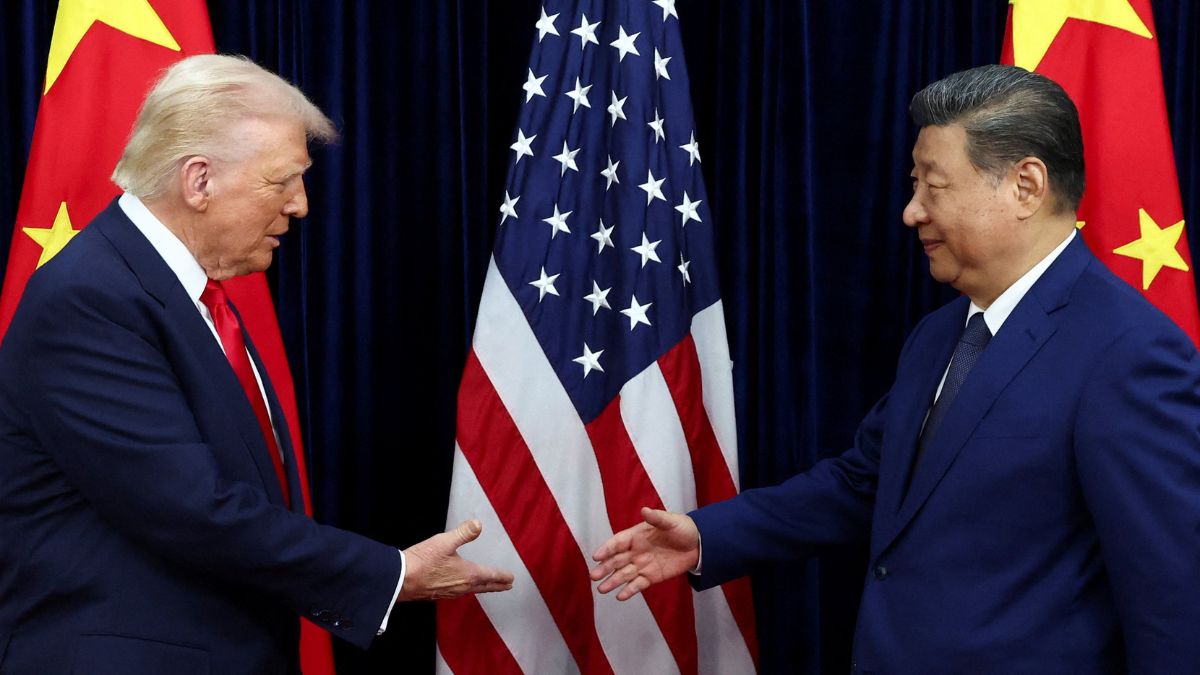)
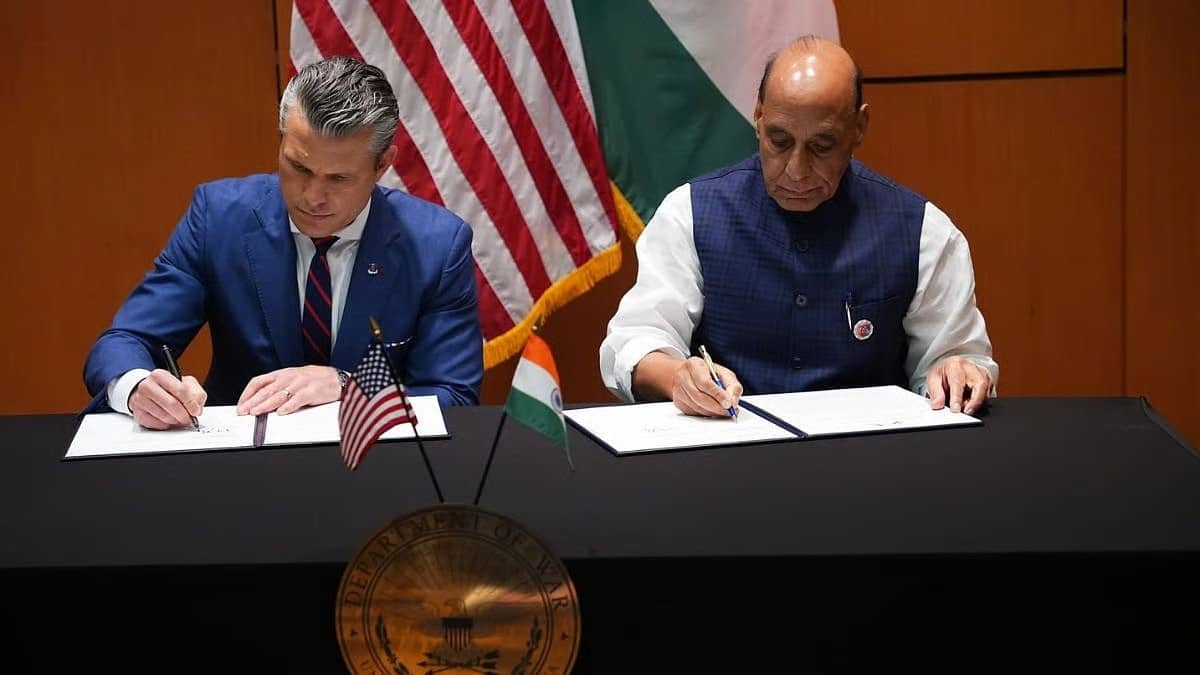
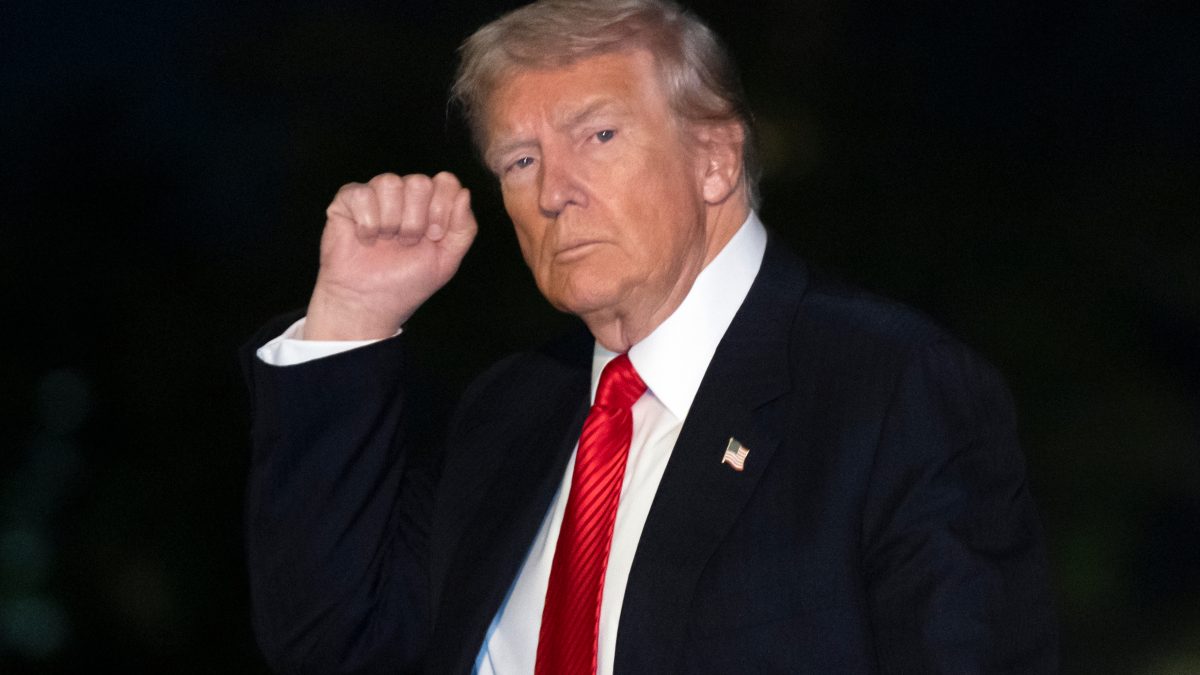)
)
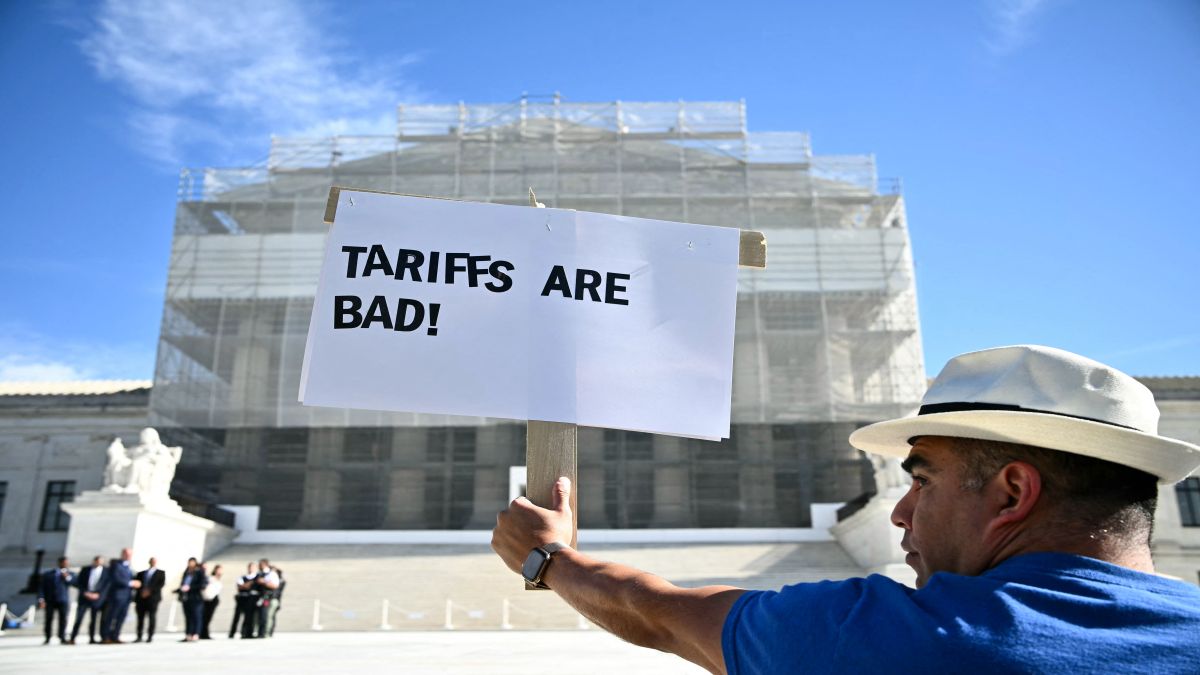)
)
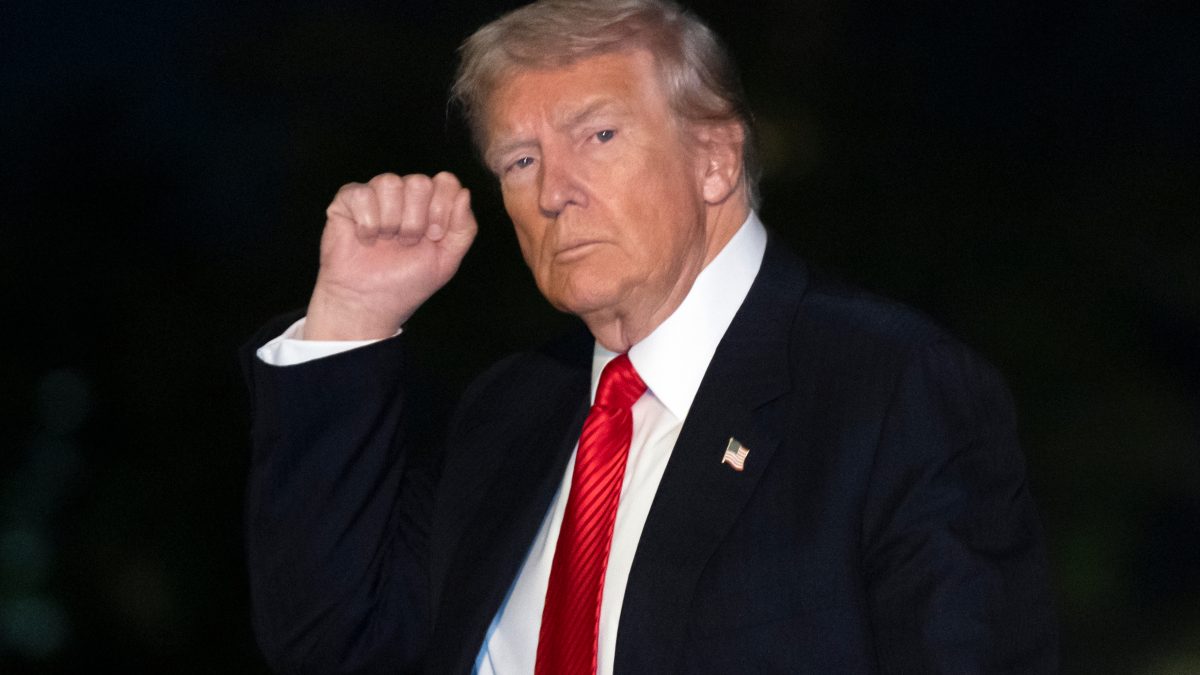)
)
)
)



